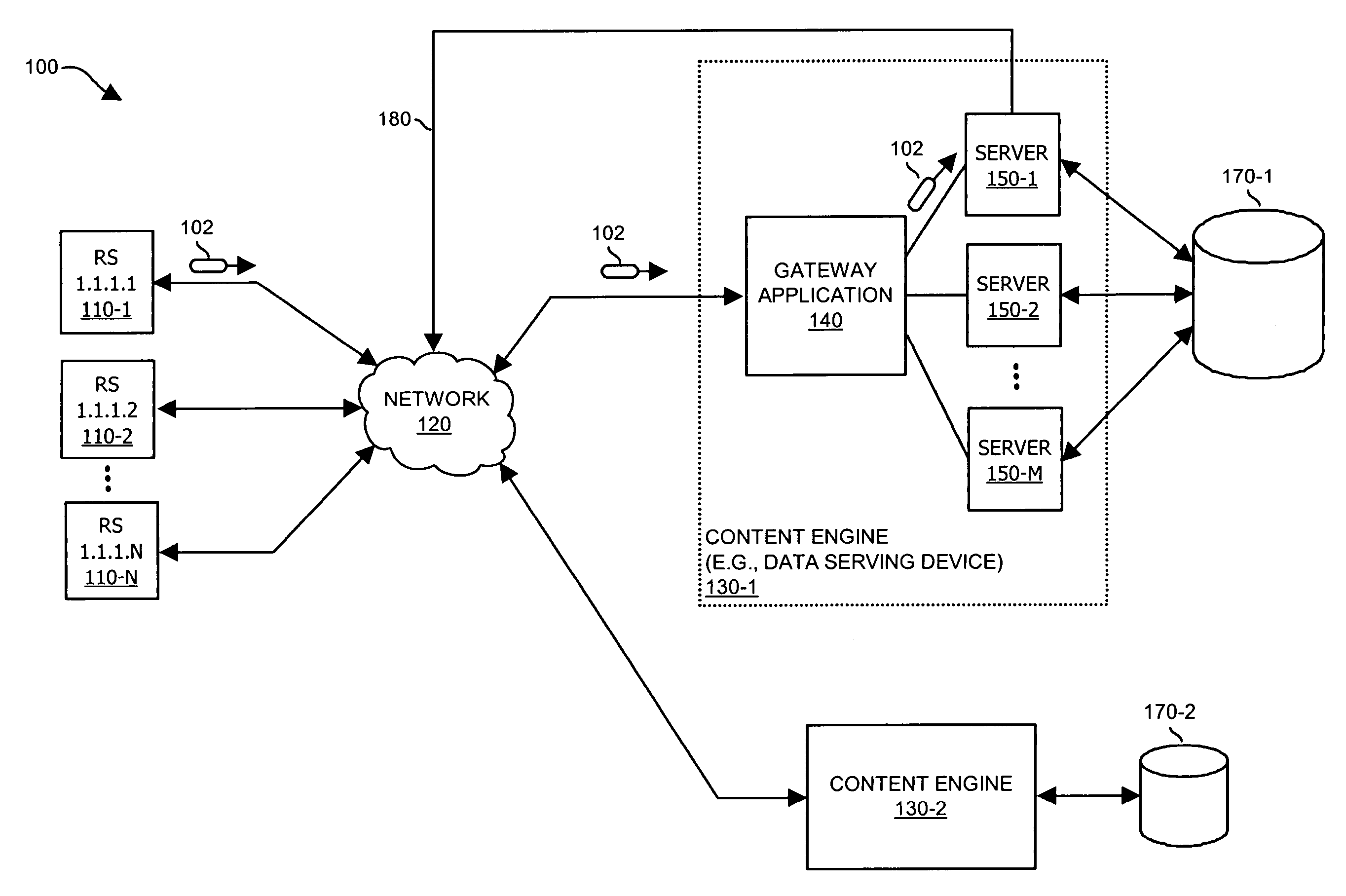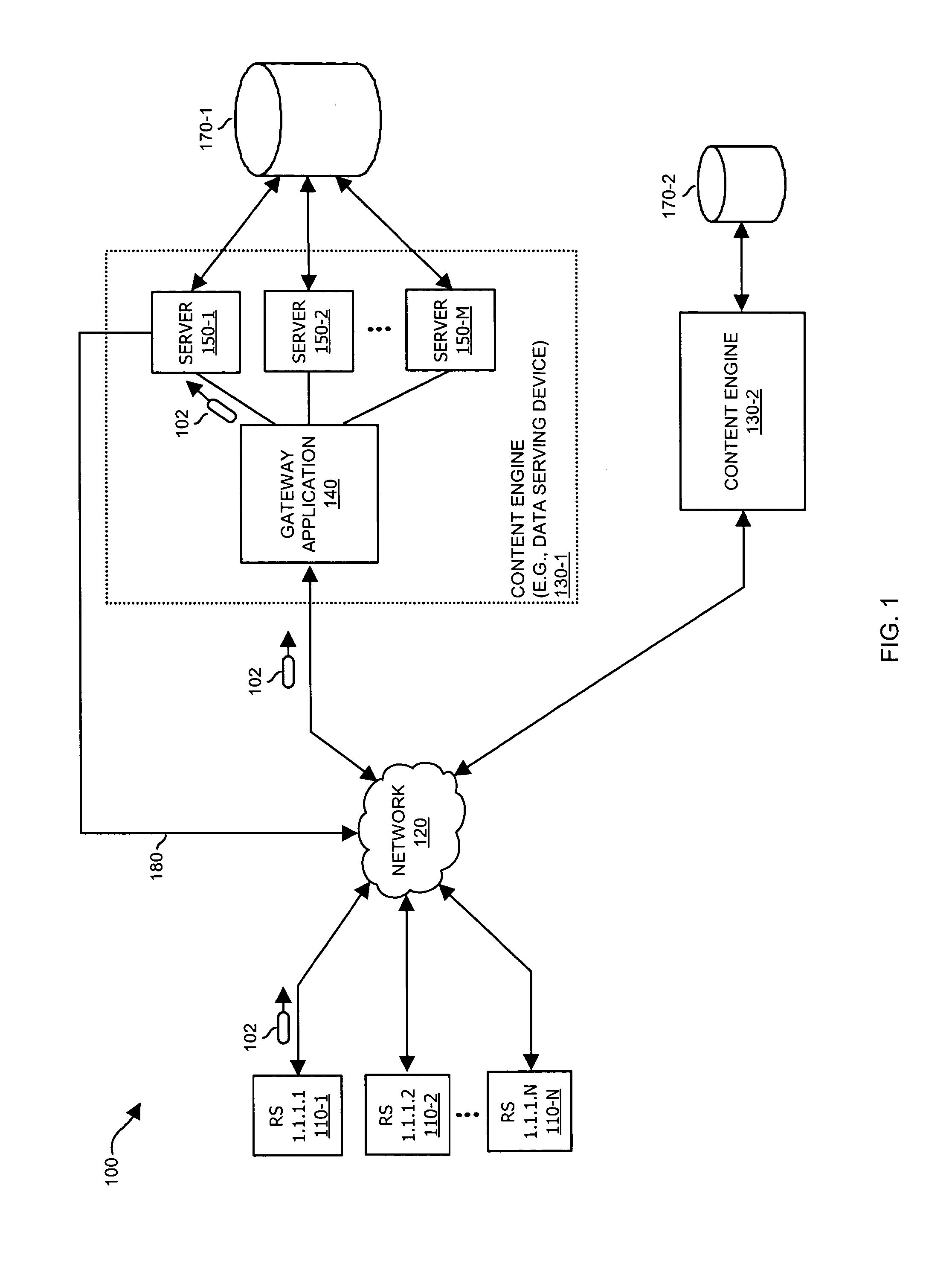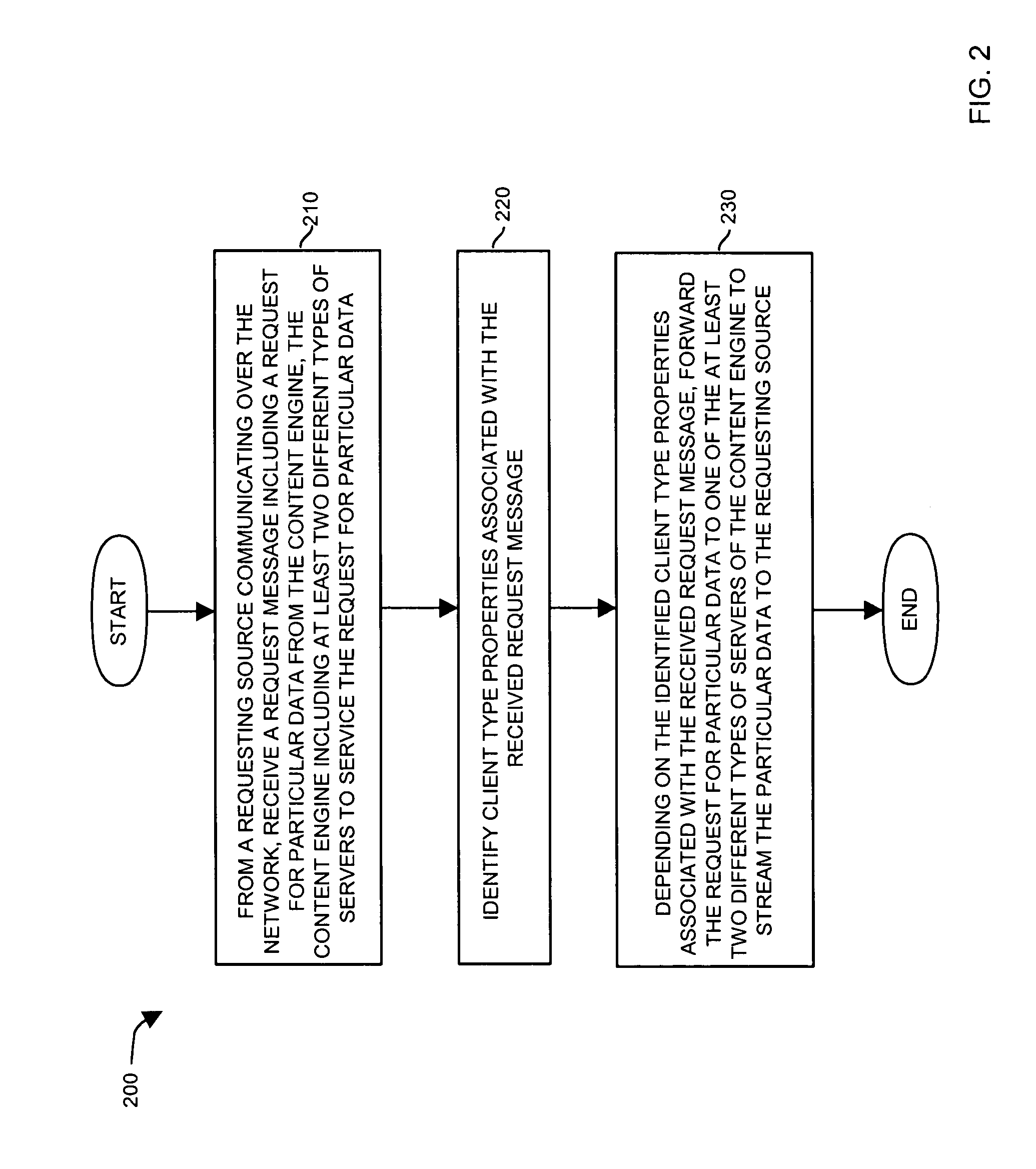Methods and apparatus for supporting transmission of streaming data
a technology of streaming data and transmission methods, applied in the direction of instruments, digital computers, computing, etc., can solve the problems of reducing the performance of a single computer operating as a content engine, reducing the number of data copies, and reducing the number of redundant processing
- Summary
- Abstract
- Description
- Claims
- Application Information
AI Technical Summary
Benefits of technology
Problems solved by technology
Method used
Image
Examples
Embodiment Construction
[0036]Embodiments of the invention include providing a gateway application for use in a content engine to dispatch requests for real-time content to servers that, in turn, service the requests by streaming appropriate real-time content to requesting users. A software communication port of the content engine is reserved to receive request messages from multiple client computers, at least two of the messages including requests for streaming of real-time content according to different selected formats. After identifying properties (e.g., a format for which to receive streaming real-time content) associated with the requests for real-time content, the gateway application identifies corresponding servers of the content engine to serve the real-time content according to the different selected formats. The gateway application forwards the requests for real-time content associated with the request messages to the corresponding servers which, in turn, satisfy the requests by streaming the re...
PUM
 Login to View More
Login to View More Abstract
Description
Claims
Application Information
 Login to View More
Login to View More - R&D
- Intellectual Property
- Life Sciences
- Materials
- Tech Scout
- Unparalleled Data Quality
- Higher Quality Content
- 60% Fewer Hallucinations
Browse by: Latest US Patents, China's latest patents, Technical Efficacy Thesaurus, Application Domain, Technology Topic, Popular Technical Reports.
© 2025 PatSnap. All rights reserved.Legal|Privacy policy|Modern Slavery Act Transparency Statement|Sitemap|About US| Contact US: help@patsnap.com



